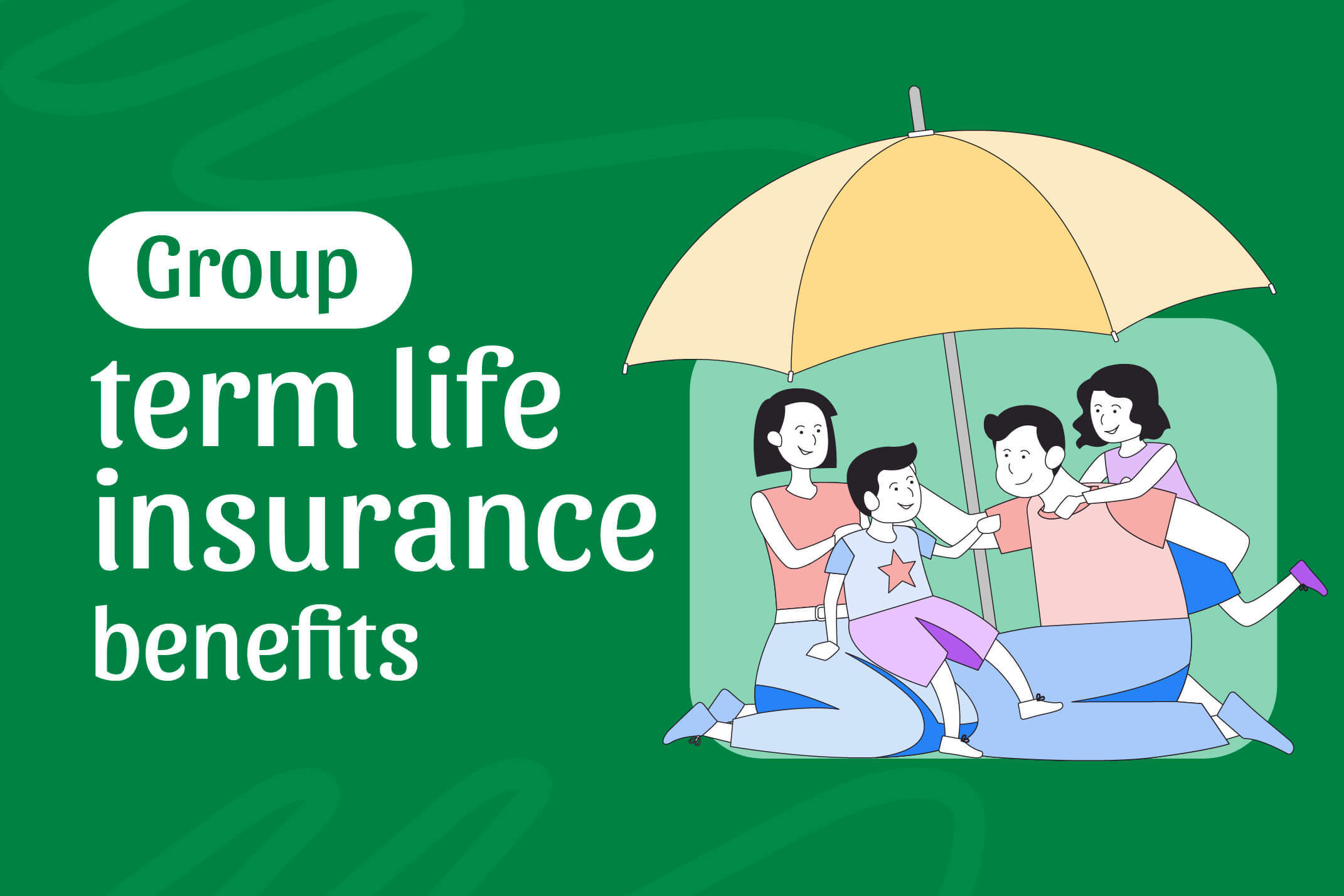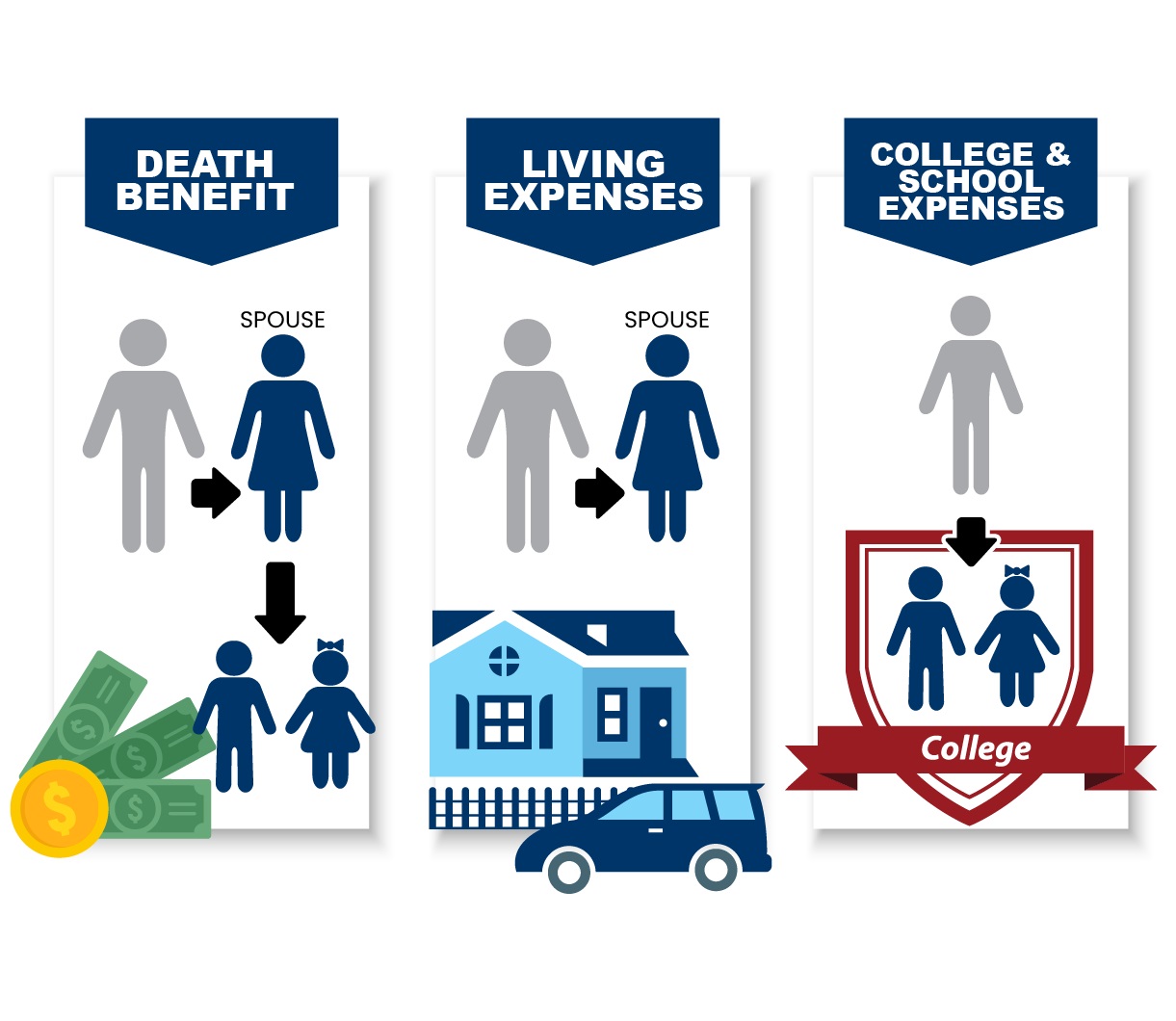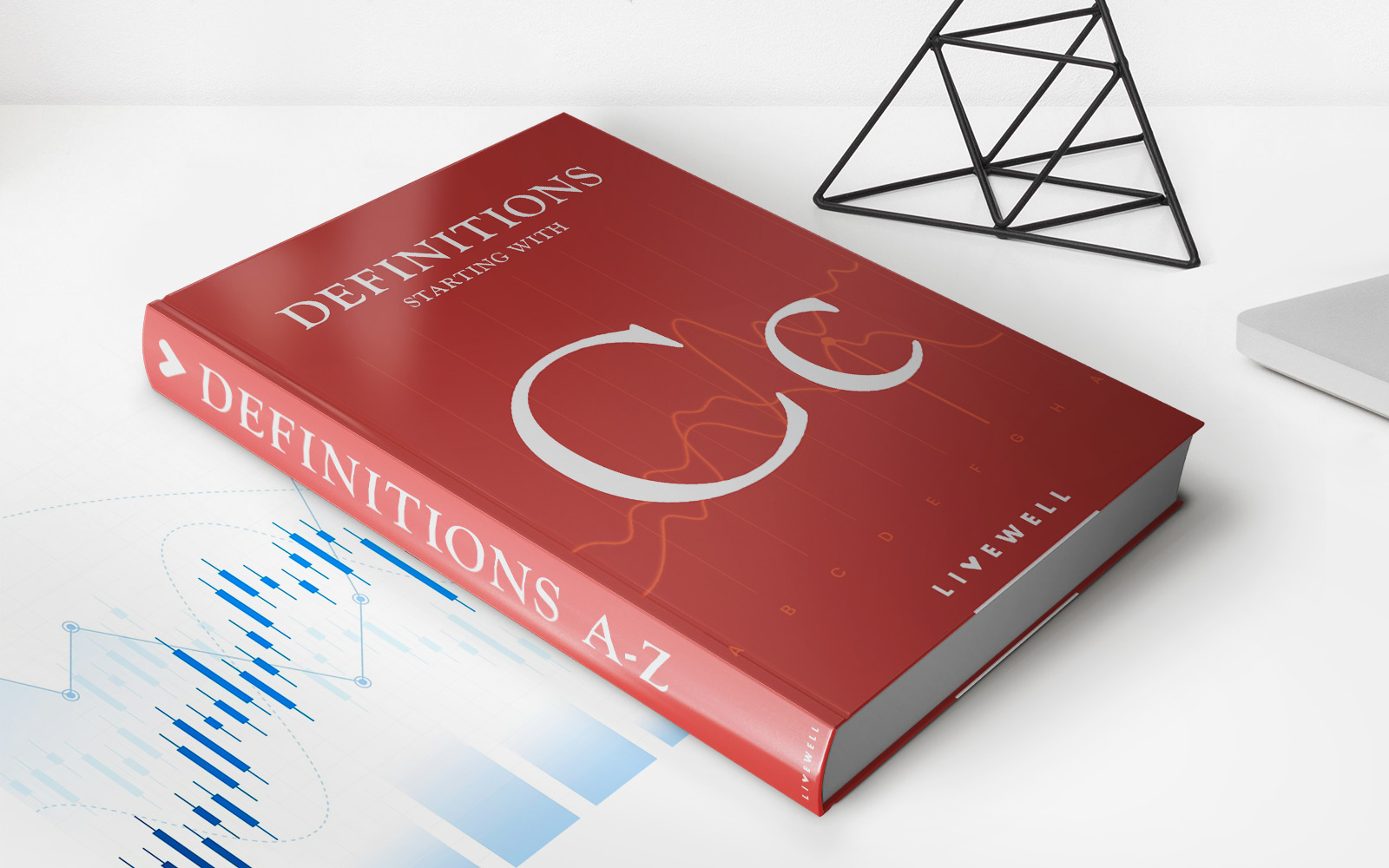Home>Finance>What Happens To Term Life Insurance When It Expires


Finance
What Happens To Term Life Insurance When It Expires
Modified: December 29, 2023
Discover what happens to your term life insurance when it expires and how it can impact your finances. Learn about your options and plan ahead for the future.
(Many of the links in this article redirect to a specific reviewed product. Your purchase of these products through affiliate links helps to generate commission for LiveWell, at no extra cost. Learn more)
Table of Contents
Introduction
Welcome to our guide on what happens to term life insurance when it expires. Life insurance is an essential financial tool that provides protection and financial security for your loved ones in the event of your untimely death. Term life insurance is a popular type of life insurance that offers coverage for a specific period of time, typically 10, 20, or 30 years. During the term of the policy, your beneficiaries will receive a death benefit if you pass away. However, what happens when the term of the policy comes to an end?
In this article, we will explore the concept of term life insurance, how it works, and what happens when it expires. We will also discuss the options available to policyholders when their term life insurance is about to expire. Whether you are a policyholder nearing the end of your term or someone considering term life insurance, this article will provide you with valuable insights to help you make informed decisions about your life insurance coverage.
Before we delve into the expiration of term life insurance policies, let’s first define what term life insurance is and how it operates.
Definition of Term Life Insurance
Term life insurance is a type of life insurance policy that provides coverage for a specific term or period of time. Unlike permanent life insurance, such as whole life or universal life insurance, term life insurance does not offer coverage for the entire duration of a policyholder’s life. Instead, it offers coverage for a predetermined term, usually ranging from 10 to 30 years.
Term life insurance policies are designed to provide financial protection to beneficiaries in the event of the policyholder’s death during the term of the policy. If the policyholder passes away within the term, the insurance company pays out a death benefit to the beneficiaries named in the policy. This death benefit is typically a tax-free lump sum payment that can be used by the beneficiaries to cover expenses such as funeral costs, outstanding debts, mortgage payments, education expenses, or any other financial needs.
One of the key features of term life insurance is its affordability compared to permanent life insurance policies. Since term life insurance only provides coverage for a specific period, it typically has lower premiums than permanent policies. This makes it an attractive option for individuals who need coverage for a specific period, such as when raising children, paying off a mortgage, or until retirement.
It is important to note that term life insurance does not build cash value over time. Unlike permanent life insurance policies, which accumulate a cash value component that can be accessed by the policyholder, term life insurance is purely a death benefit policy. If the policyholder survives the term of the policy, there is no payout or return of premiums.
Now that we understand what term life insurance is and its basic characteristics, let’s explore how it works in more detail.
How Term Life Insurance Works
Term life insurance works by providing coverage for a specific term or period of time. When you purchase a term life insurance policy, you choose the length of the term, typically 10, 20, or 30 years. During this term, you pay regular premiums to maintain the policy. If you pass away within the term, the insurance company pays out a death benefit to your designated beneficiaries.
The amount of coverage, or death benefit, is another important factor to consider when purchasing term life insurance. You can choose a death benefit amount based on your specific financial circumstances, such as your income, outstanding debts, and future financial obligations. The death benefit is generally set to provide financial support for your loved ones to cover funeral expenses, outstanding debts, ongoing living expenses, or any other financial needs they may have after you’re gone.
It’s important to note that term life insurance premiums are generally fixed for the entire term of the policy. This means that your premiums will remain the same throughout the duration of your coverage, providing a predictable expense for budgeting purposes.
Another key aspect of term life insurance is the ability to convert it to permanent life insurance. Many term life insurance policies offer the option to convert to a permanent policy, such as whole life or universal life insurance, without the need for a medical exam or additional underwriting. This can be an advantageous feature if your financial needs or circumstances change during the term of your policy.
Overall, term life insurance provides temporary coverage and offers peace of mind during the chosen term. It is a flexible and affordable option for individuals who want to protect their loved ones financially for a specific period, ensuring their financial security and stability if the unexpected happens.
Now that we understand how term life insurance works, let’s explore the term length and expiration of term life insurance policies.
Term Length and Expiration
Term life insurance policies come with different term lengths, typically ranging from 10 to 30 years. The term length you choose depends on your specific needs and financial goals. Shorter terms, such as 10 or 15 years, may be suitable if you have a specific financial obligation or if you anticipate your financial needs will decrease over time, such as paying off a mortgage or supporting children until they reach adulthood. Longer terms, such as 20 or 30 years, may be more appropriate if you want to provide long-term financial protection for your loved ones, ensure income replacement until retirement, or leave a substantial inheritance.
Once the chosen term of the policy comes to an end, the term life insurance policy expires. This means that the coverage provided by the policy ceases, and there is no longer a death benefit payable upon the policyholder’s death. It’s essential to understand that the premiums you paid towards the term life insurance policy during the term are not refunded when the policy expires because term life insurance does not build cash value.
The expiration of a term life insurance policy does not typically result in any penalty or negative consequences. It’s important, though, to assess your insurance needs at this stage to determine the best course of action moving forward. Depending on your circumstances and financial goals, you may have several options available to you when your term life insurance policy is about to expire.
In the next section, we will explore what happens when term life insurance expires and the available options for policyholders.
What Happens When Term Life Insurance Expires
When a term life insurance policy reaches its expiration date, the coverage provided by the policy comes to an end. This means that if the policyholder passes away after the expiration of the policy, there will be no death benefit paid out to the beneficiaries. However, it’s important to remember that the expiration of term life insurance does not leave policyholders empty-handed.
When a term life insurance policy nears its expiration date, the insurance company will typically provide a notification to the policyholder. This notification serves as a reminder that the coverage is about to expire and presents the policyholder with several options for their life insurance coverage going forward.
One option for policyholders when their term life insurance expires is to renew the policy. Depending on the insurance company and the specific policy terms, policyholders may have the option to renew their term life insurance for another term. However, it’s important to note that the premiums for a renewed policy may be significantly higher, as the policyholder is likely older and may have developed health conditions over the initial term of the policy.
Another option is to explore the possibility of converting the term life insurance policy into a permanent life insurance policy. Many term life insurance policies offer a conversion feature that allows policyholders to convert their coverage into a permanent policy, such as whole life or universal life insurance, typically without the need for a medical exam or additional underwriting. This can be an attractive option for policyholders who want to maintain life insurance coverage for the remainder of their lives and potentially accumulate a cash value component over time.
If the policyholder’s insurance needs have changed or they no longer require life insurance coverage, they may choose to let the term life insurance policy expire. While this means that there will be no death benefit payable upon the policyholder’s death, it also means that the policyholder will no longer need to pay premiums for life insurance coverage.
It’s important for policyholders to carefully consider their options and assess their insurance needs before their term life insurance policy expires. Consulting with a financial advisor or insurance professional can provide valuable guidance and help policyholders make informed decisions about their life insurance coverage.
Now that we have explored the options available when term life insurance expires, let’s dive into the details of extending term life insurance.
Options for Extending Term Life Insurance
When a term life insurance policy is nearing its expiration date, policyholders have several options to consider for extending their life insurance coverage. While the specific options may vary depending on the insurance company and policy terms, here are a few common options available:
- Renewal: Some term life insurance policies offer the option to renew the coverage for another term. The renewal process typically involves an adjustment of the premium based on the policyholder’s current age and health. It’s important to note that the renewed premiums may be significantly higher than the original premiums paid. Policyholders should carefully evaluate the cost and benefits of renewing the policy before making a decision.
- Conversion: Many term life insurance policies include a conversion feature, allowing policyholders to convert their coverage into a permanent life insurance policy, such as whole life or universal life insurance. This option is advantageous for individuals who want to maintain life insurance coverage for the rest of their lives and potentially accumulate a cash value component. The conversion may be available without the need for a medical exam or additional underwriting, making it more accessible.
- New Policy: Instead of renewing or converting the existing term life insurance policy, policyholders have the option to shop for a new life insurance policy. By exploring different insurance providers, policyholders can compare rates, coverage options, and terms to find a policy that meets their current needs and budget. It’s essential to consider the timing of applying for a new policy, as age and health conditions can impact premiums.
- Supplemental Coverage: If the need for life insurance coverage extends beyond the current term policy, policyholders may consider purchasing supplemental coverage. This can involve obtaining an additional term life insurance policy with a shorter term or filling any coverage gaps with a permanent life insurance policy. It’s important to review the cost and coverage of the supplemental policy to ensure it aligns with the policyholder’s financial goals and needs.
When exploring these options, it’s crucial for policyholders to thoroughly review the terms, costs, and potential benefits of each choice. Consulting with a financial advisor or insurance professional can provide valuable guidance in determining the most suitable option based on their specific circumstances.
Now that we have looked at the options for extending term life insurance coverage, let’s explore the conversion of term life insurance to permanent life insurance.
Converting Term Life Insurance to Permanent Life Insurance
Converting a term life insurance policy to a permanent life insurance policy is a common option available to policyholders as their term insurance approaches its expiration date. This conversion allows policyholders to transition from temporary coverage to lifelong coverage, providing an opportunity for long-term protection and potential cash value accumulation.
One of the key advantages of converting term life insurance to permanent life insurance is the ability to lock in coverage for the rest of the policyholder’s life. Permanent life insurance, such as whole life or universal life insurance, offers coverage that lasts as long as the policyholder continues to pay premiums. This means that policyholders can rest assured knowing that their loved ones will receive a death benefit, regardless of when they pass away.
Furthermore, permanent life insurance policies have a cash value component that grows over time. The policyholder’s premiums contribute to the cash value, which can be accessed during the lifetime of the policyholder. This cash value can be utilized for various purposes, such as supplementing retirement income, paying for education expenses, or covering unforeseen financial emergencies.
When converting term life insurance to permanent life insurance, policyholders typically have the option to convert without the need for a medical exam or additional underwriting. This can be advantageous for individuals who may have developed health conditions or experienced changes in their health since purchasing the term life insurance policy.
It’s important to note that the conversion process may involve adjusting the premium to reflect the policyholder’s current age and the coverage amount desired. The converted premium for permanent life insurance is typically higher than the premium for term life insurance, as it provides lifelong coverage and the potential for cash value accumulation.
Before making the decision to convert term life insurance to permanent life insurance, policyholders should carefully consider their financial goals and needs. If the policyholder requires lifelong coverage and desires the benefits of a cash value component, converting to permanent life insurance can be a suitable option. However, if the policyholder’s insurance needs have changed or they no longer require life insurance coverage, exploring other options may be more appropriate.
Consulting with a financial advisor or insurance professional can provide valuable insight and guidance in determining whether converting term life insurance to permanent life insurance is the right choice based on the policyholder’s individual circumstances.
Now that we have explored the option of converting term life insurance to permanent life insurance, let’s discuss the alternative of letting term life insurance expire.
Letting Term Life Insurance Expire
Letting a term life insurance policy expire is an option that policyholders may choose when they no longer require life insurance coverage or find it financially prudent to continue paying premiums. When a term life insurance policy reaches its expiration date, policyholders have the choice to allow the policy to expire naturally without taking any further action.
There are several factors to consider when deciding to let term life insurance expire. One of the main considerations is the policyholder’s current financial situation and insurance needs. If the policyholder’s financial obligations have decreased, such as paying off a mortgage or children becoming financially independent, they may feel that life insurance coverage is no longer necessary.
Additionally, if the policyholder has accumulated sufficient savings or investments to provide financial security for their loved ones in the event of their death, they may choose to let the policy expire. This decision depends on the individual’s overall financial picture and their confidence in their ability to provide for their beneficiaries without the help of life insurance.
Another factor to consider is the cost of premiums. As policyholders age, the premiums for term life insurance policies typically increase. By allowing the policy to expire, policyholders can avoid the higher premiums associated with renewing the policy or converting it to permanent insurance. This can be a cost-saving measure, particularly for individuals on a fixed income or those looking to reduce their monthly expenses.
It’s important to note that letting term life insurance expire means that there will be no death benefit payable upon the policyholder’s death. This can have implications for the financial stability of the policyholder’s loved ones if they rely on the death benefit to cover expenses or maintain their standard of living. Policyholders should consider alternative means of financial protection or provisions for their beneficiaries if they decide to let the policy expire.
Lastly, it’s important to review any outstanding debts or financial obligations before letting term life insurance expire. If the policyholder still has significant debts that could burden their loved ones, it may be advisable to explore other insurance options or consider extending the term of the policy to ensure adequate coverage.
Ultimately, the decision to let term life insurance expire should be based on a careful evaluation of the policyholder’s current financial situation, insurance needs, and the well-being of their beneficiaries. It can be helpful to consult with a financial advisor or insurance professional to fully understand the potential consequences and explore other alternatives if necessary.
Now that we have considered the option of letting term life insurance expire, let’s conclude our discussion.
Conclusion
Term life insurance offers valuable financial protection for a specific period of time, providing peace of mind to policyholders and their loved ones. However, when the term of a policy comes to an end, policyholders face several decisions regarding their life insurance coverage.
In this guide, we have explored the concept of term life insurance, how it works, and the options available when it reaches its expiration date. We discussed the flexibility and affordability of term life insurance, as well as its limitations in terms of not accumulating cash value.
When term life insurance expires, policyholders have several options to consider. They can choose to renew the policy for another term, convert it to permanent life insurance, explore new policies, or let the coverage expire naturally. Each option has its own implications and advantages, which should be carefully evaluated based on individual circumstances, financial goals, and insurance needs.
Renewing the policy provides continued coverage, but the premiums may increase. Converting to permanent life insurance offers lifelong coverage and the potential for cash value accumulation, but the premiums will also be higher. Exploring new policies allows policyholders to assess different coverage options and potentially find a more suitable policy. Lastly, letting the term life insurance policy expire can be a viable option if the coverage is no longer needed or if the premiums are not financially sustainable.
It’s crucial for policyholders to thoroughly review their insurance needs and consult with financial advisors or insurance professionals to make informed decisions about their life insurance coverage. The chosen option should align with their financial goals, provide adequate protection for their loved ones, and be sustainable within their budget.
Remember, life insurance is a key component of financial planning, and the right approach to term life insurance expiration can contribute to long-term financial security and peace of mind for both the policyholder and their beneficiaries.
Thank you for reading our guide on what happens to term life insurance when it expires. We hope it has provided you with valuable insights and information to navigate the expiration of term life insurance. Remember to always review your options and make decisions that best align with your specific circumstances and financial goals.














